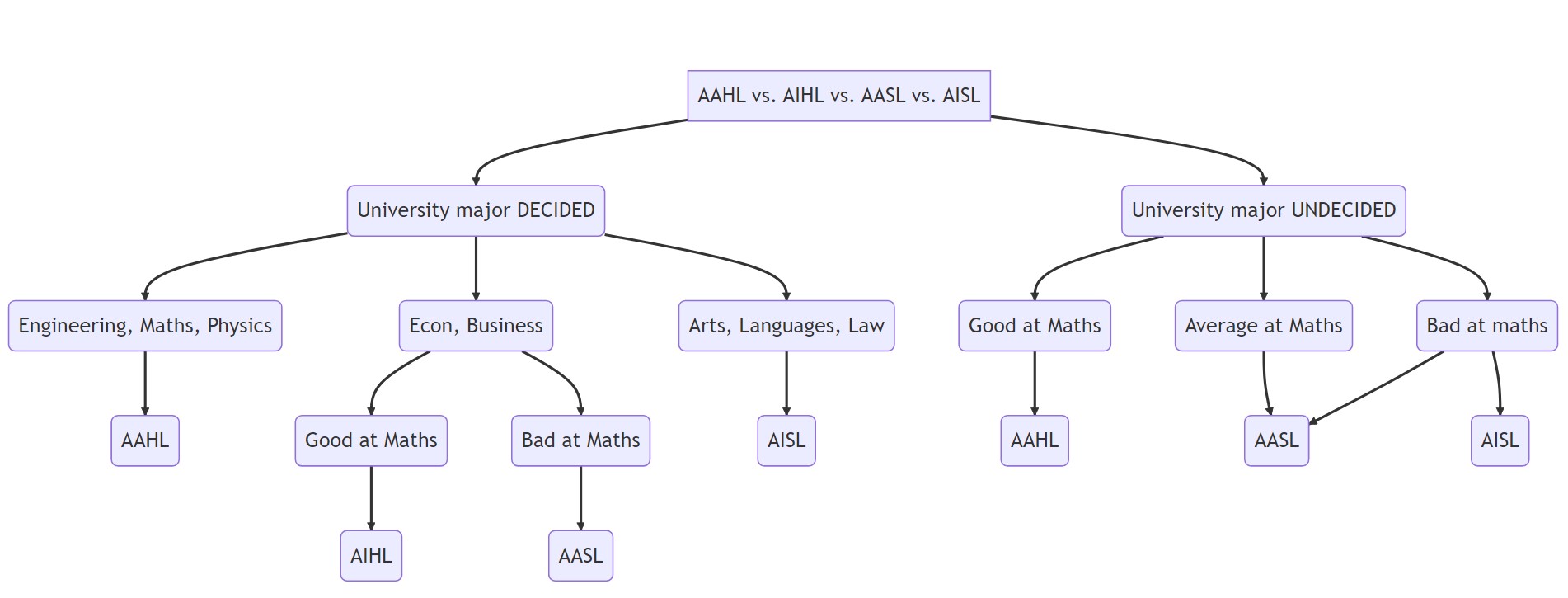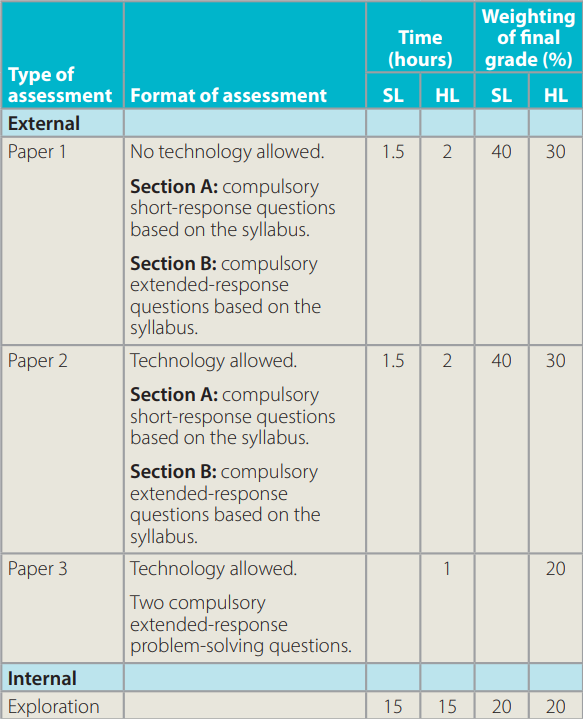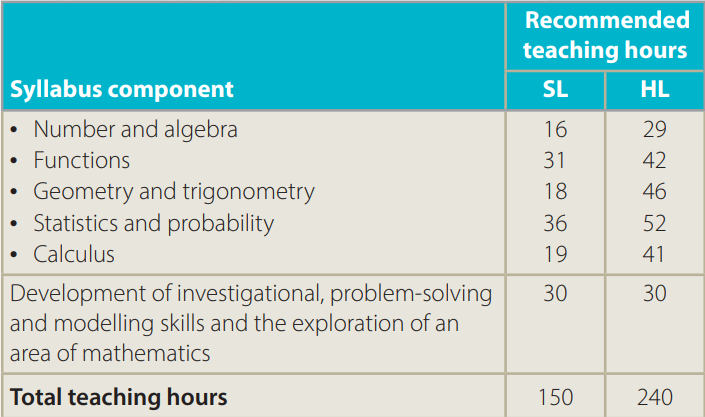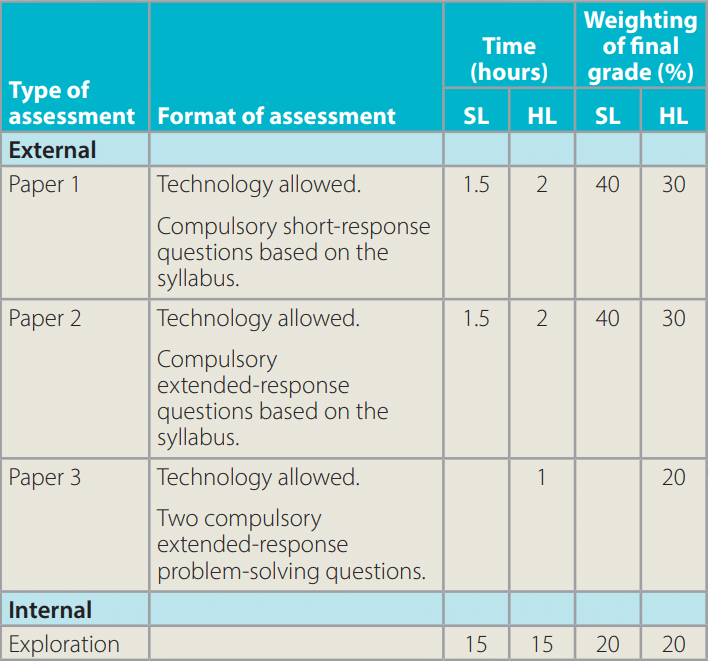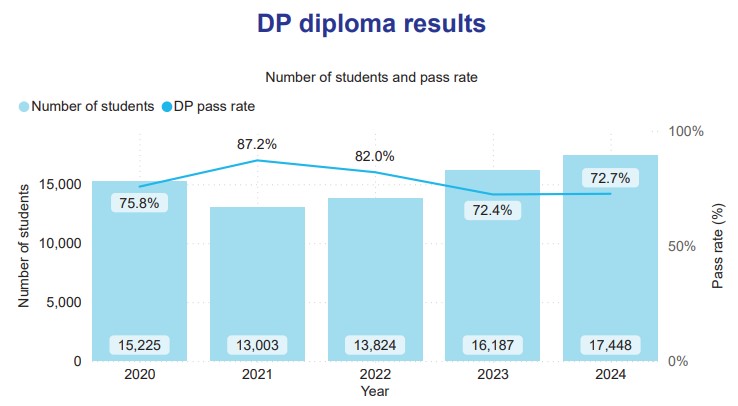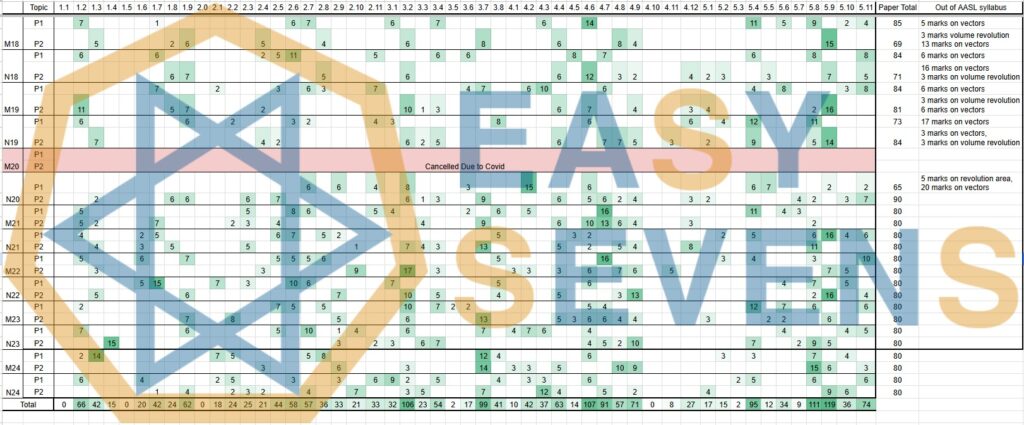I. Introduction
The International Baccalaureate (IB) program has undergone a significant transformation in its mathematics curriculum in 2021, expanding from three courses to four. As a graduate of IB Math HL and a seasoned IB Math tutor at Easy Sevens, I can offer a unique perspective with insider information on the revised curriculum, including the newly introduced IB Analysis and Approaches HL (AAHL), IB Analysis and Approaches SL (AASL), IB Application and Interpretation HL (AIHL), and IB Application and Interpretation SL (AISL).
Choosing the right math course is a pivotal decision for any student embarking on their IB journey, as it affects not only their overall program experience but also their future academic pursuits. The level of difficulty, university programs they hope to enter, the availability of courses at their school, and their personal math foundation are just a few of the factors that must be considered when making this decision.
It is worth noting that the AAHL is comparable in difficulty to the former IB Math HL, while the AASL aligns with the former Math SL. On the other hand, the AIHL is positioned between the former Math HL and Math SL in terms of difficulty, and the AISL mirrors the former Math Studies. Understanding these nuances and complexities is crucial in navigating the new IB math curriculum and selecting the course that is right for you.
II. Deep Dive into IB Math AA (Analysis and Approaches)
A. Curriculum and Overarching Direction
For students who seek a more theoretical approach to mathematics, the IB Math AA program, which encompasses AAHL and AASL, offers an ideal solution. The curriculum places a strong emphasis on the study of calculus, allowing students to delve into its intricacies and explore its applications.
It is worth mentioning that a vast majority of IB schools in Hong Kong offer both AAHL and AASL courses, providing students with ample opportunities to delve into this theoretical approach to mathematics. The program consists of three assessment components: Paper 1, which prohibits the use of calculators; Paper 2, which allows for the use of calculators; and the Internal Assessment (IA), which is completed as coursework. Furthermore, only students enrolled in the AAHL course are required to complete Paper 3, a calculator-based paper
B. The Suitable Candidates for IB Math AA
The IB Math AA program, is designed to cater to students with a strong foundation in mathematics and the ability to perform mental calculations accurately and swiftly. This program is well-suited to students who aspire to pursue a highly quantitative university degree, such as Mathematics, Engineering, or Physics.
The program demands a certain level of dedication and hard work, and is best suited to students who are not daunted by the prospect of staying up late to complete math homework and past paper problems. Students who are self-motivated, driven, and have a passion for the subject will thrive in this program, which offers a challenging and engaging curriculum that will help them reach their full potential.
C. Deciding on the Right Path: The AAHL vs. AASL
Selecting between IB Math Analysis and Approaches HL (AAHL) and SL (AASL) demands a deliberate evaluation of one’s mathematical acumen and future aspirations. The AAHL course, designed for students of exceptional mathematical prowess and/or those seeking a robust foundation for university-level mathematical studies, is replete with challenging topics, including higher-level calculus, that require a significant investment of time and effort. On the other hand, the AASL course, while still rigorous, is tailored to students of average mathematical ability and may be more suitable for those pursuing disciplines with a lower mathematical requirement. However, choosing AASL over AAHL entails the forfeiture of certain opportunities, as certain highly quantitative university programs may prefer AAHL graduates. Additionally, the AAHL program features an additional examination paper 3, with a heightened focus on HL-only topics such as differential equations, which could prove difficult for some students.
III. The Elusive and Challenging Nature of IB Math AI (Applications and Interpretations)
A. An In-depth Examination of Curriculum and Purposeful Direction
The IB Math AI (Applications and Interpretations) course is an innovative approach to education that challenges students to delve into the realm of mathematics, encouraging them to apply the concepts they learn to real-world situations. This course places an emphasis on statistics and distributions, providing students with an opportunity to enhance their mathematical skills and understanding in practical and meaningful ways.
It is imperative for students to take note that the majority of IB schools in Hong Kong offer the AISL course, however, not all schools may provide AIHL, hence it is crucial for students to verify with their school prior to making a decision. The program involves three examination papers, Paper 1 and Paper 2 permitting the utilization of a calculator. Additionally, students are required to partake in an internal assessment (IA) as part of their coursework. The third paper, Paper 3, is only for Higher Level (HL) students and will be a calculator-based exam, focusing on HL-only topics.
The use of a calculator is an integral aspect of IB Math AI, thus it is vital for students to become adept in utilizing their calculators and to hone their techniques to use them efficiently. This will give students the necessary skills and confidence they need to perform optimally in their exams, as well as maximize their learning experience.
B. The Suitable Candidates for IB Math AI
For students who have an inclination towards pursuing less quantitatively demanding majors in university such as Economics, Business, Arts, Languages, and Law, the IB Math AI course may be the perfect fit. The strong emphasis on the application of mathematical concepts to real-world scenarios, makes it ideal for students who desire to see how the math they learn in class can be applied to their daily lives.
For students who struggle with mental math or frequently make errors when performing mental math, math AI may be the more suitable option. With both Paper 1 and 2 being calculator exams, students will not have to heavily rely on their mental math skills, unlike the other math programs.
However, students who choose math AI must be prepared to invest time in learning their calculator inside out, familiarizing themselves with all of its functions, and doing a considerable amount of practice with their calculators. By doing so, they will be able to use their calculators more efficiently and effectively.
C. Deciding on the Right Path: The AIHL vs. AISL
For students who are eager to delve into the fields of Economics or Business, the International Baccalaureate (IB) Math AIHL program may be the ideal match. This curriculum is designed to sharpen mathematical skills relevant to these fields, making it ideal for students who excel in mathematics and desire to apply their skills in a practical manner.
For those students who aim to explore majors in the Arts, Languages, or Law, the IB Math AISL program may align more closely with their academic goals. This program provides a more relaxed approach to mathematics and is meant for students who find mental math challenging or prefer to rely on their calculator to perform complex calculations.
IV. Comparison of the 4 Math Levels
A. Grades Comparison
As you approach the climax of this article, it’s time to delve into the juiciest part that you have all been eagerly waiting for. The level of difficulty for the four math courses offered by the International Baccalaureate (IB) Program ranges from the most challenging to the least challenging as follows: AAHL, AIHL, AASL, and AISL.
Looking at the statics of the November 2022 IB exams, it may seem that the easiest course to score a 7 in would be AAHL, as 32.8% of all students who take it receive a 7. However, it’s essential to keep in mind that this data is skewed towards a 7 because the majority of students who take AAHL are already very strong in mathematics. On the other hand, 10.8% of all students who take AASL receive a 7, 8.8% of all students who take AIHL receive a 7, and only 5.4% of all students who take AISL receive a 7.
C. Choosing the Right Math Course
So, what course should you choose if you’re unsure of your future university path or if you have varying levels of mathematical proficiency? Let’s take a look at the options:
- If you’re good at math and don’t know what you want to study in university, AAHL is your best bet. This course will equip you with a versatile foundation in math that can be applied to a wide range of university disciplines.
- On the other hand, if you’re good at math and know you want to study business or economics, AIHL is the perfect fit. With its slightly lower level of difficulty compared to AASL, you’ll have a better chance of scoring a high grade while still meeting any university entry requirements.
- If you’re average in math and don’t know what you want to study, AASL is the way to go. With a wider range of university disciplines that require mathematical skills, this course will provide you with more opportunities.
- If you’re bad at math and don’t know what you want to study, AISL is your best option. Although your university course selection may be limited, you’ll have a higher chance of scoring a high grade in this course.
- Lastly, if you’re planning to study arts, languages, or law in university and are average or bad at math, AISL is the way to go. These university disciplines generally don’t require a strong mathematical background, so focusing on getting the highest possible grade in this course is key.
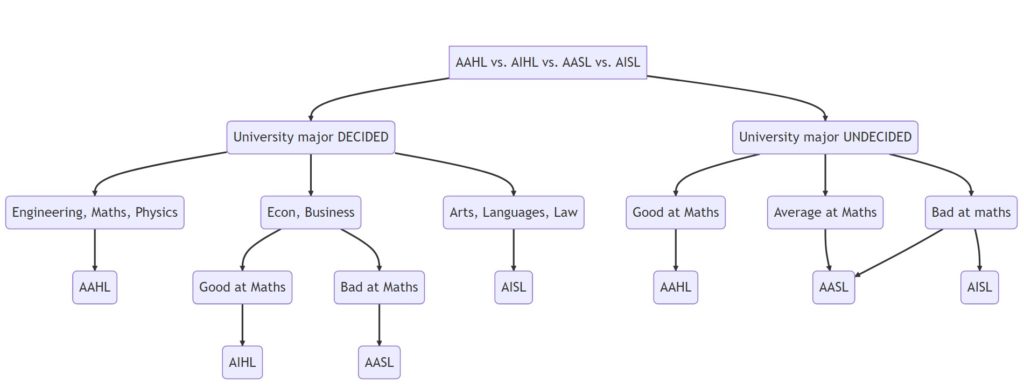
V. Conclusion: The Ultimate Balancing Act
In conclusion, the conundrum of selecting the ideal International Baccalaureate (IB) math course to suit your individual needs, goals, and aspirations, is a labyrinthine and sophisticated process. The critical trifecta of considerations to keep in mind are as follows: what you envision for your future academic and professional pursuits, your mathematical proficiency, and the desired grade you aim to attain in the IB program.
The ultimate decision requires a nuanced, intricate and methodical evaluation of the delicate interplay between maximizing the range of university courses available to you and attaining your ideal IB math grade. It falls on you to meticulously examine the specific university courses that pique your interest and to ensure that you meet all entrance requirements. With the right approach and a considered evaluation, you will be poised to navigate this complex and challenging landscape with grace, and arrive at a destination that aligns with your dreams and aspirations. If you still have questions on choosing your IB math course, contact us and we will try our best to help!

